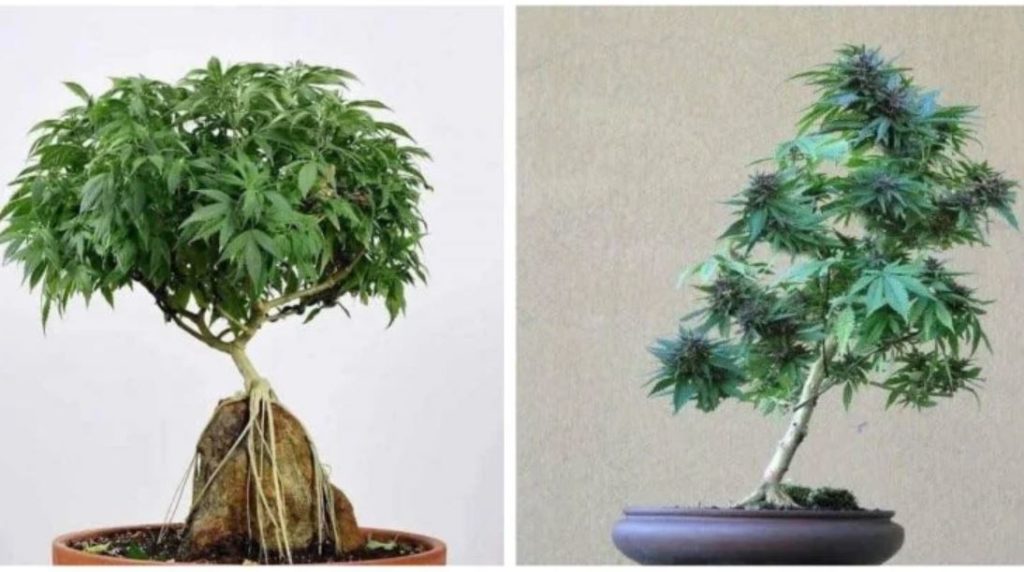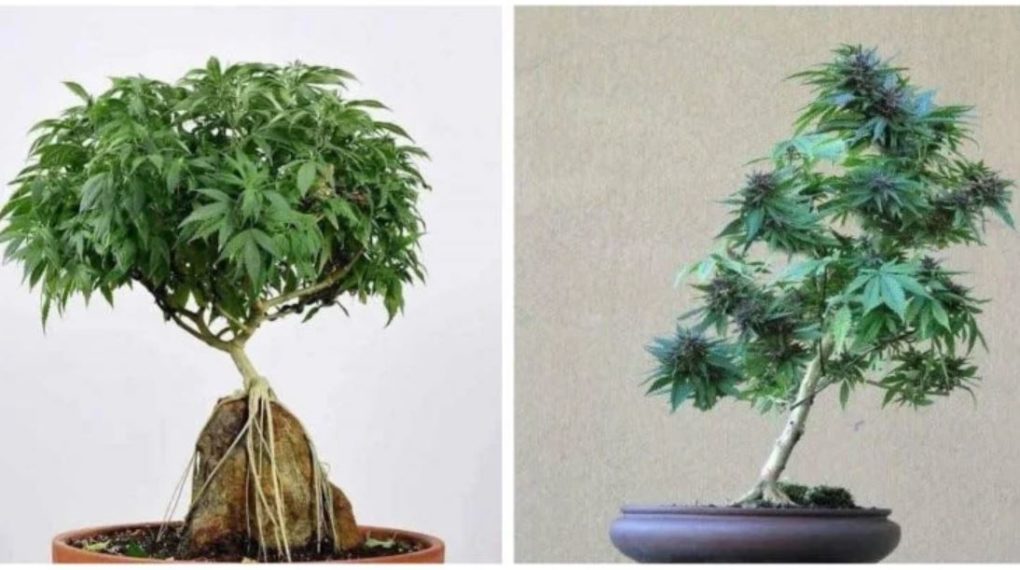How To Grow Your Own Out Of This World Cannabis Bonsai Tree
 By Jade Small
By Jade Small
The Japanese fine-tuned the techniques and named it bonsai, which simply means ‘planted in a container’. The aim of this tradition is to grow a healthy plant that will grow into maturity but remain much smaller than the size of the same species growing in nature.
This is achieved by using small containers for planting and thereby restricting the plant’s ability to absorb nutrients and develop extensive root systems.
Widget not in any sidebars
The most famous bonsai, the Japanese White Pine or the Yamaki Pine, is just under 400 years old and was trained into an exceptional bonsai by six generations of the Yamaki family and miraculously survived the atomic bomb dropped on Hiroshima 75 years ago, on August 6, 1945, completely unscathed.
The tree is now part of a permanent exhibition at the National Bonsai & Penjing Museum in Washington DC.
In recent years, growers have experimented with creating cannabis bonsai, primarily to produce clone clippings from a mother plant.
The smaller size of the mother plant as a bonsai means many mother plants can be grown in a much smaller space, thus allowing for diversity in the cannabis garden and eliminating the need to grow from seed.
Although the basic steps for planting and training a cannabis bonsai are the same as for any tree or plant, bear in mind that soil, light, humidity, heat and water requirements differ from species to species.
YOU’LL NEED: a young cannabis plant in a pot, a drill, plastic coated wire or gardening twine, a wooden stake (or dowel). If you’re starting with a mother plant clone clipping you’ll need a pot and soil as well.
STEP ONE: PREPARE THE POT
No need for using a traditional bonsai pot, a small upright pot will be fine. Drill holes around the rim of the pot, this will be useful to help with training the plant with string or twine. Ensure the holes are big enough for the twine to fit through comfortably.
STEP TWO: PLANT YOUR CUTTING
Choose a healthy and sturdy cutting from the mother plant. Add the soil to the pot and position the cutting in the pot.
Push the wooden stake into the soil next to the main stem of the cutting and be careful not to damage any roots. The stake can be used to position the trunk of the bonsai to any position you want it to grow, with the help of the twine and the holes drilled in the pot. Don’t tie the trunk with too much force, and leave some room for the trunk to grow in width.
STEP THREE: TIME TO TRAIN
Train the branches as you did the stem, by tying them in the position you choose with the twine using the drilled holes. To create horizontal branches they will need to be tied down tighter and less tight for the vertical. Be gentle so as not to damage or snap the branches. The branches should be allowed to be grown without too much restriction.
STEP FOUR: PRUNING
To keep the classic bonsai shape and allow airflow to the plant’s main stem it’s important to keep the stature and prune to only the offshoot branches. Cutting the main branches could affect the health and growth of the plant severely.
At this stage the jury is still out on how long bonsai mother trees should be kept active. Since they can be kept in a vegetative stage indefinitely, they could technically keep going for as long as they are alive. However, growers have found that pure indica’s degrade faster and sativa’s last longer.
Currently, as a general rule, indica’s are replaced every 3–4 years, hybrids every 4–5 years, and sativa’s every 5–6 years. However, the strain and the quality of care the plant receives will no doubt impact its lifespan.
WHICH STRAINS ARE BEST FOR CANNABIS BONSAI TREES?
The genetics of each strain is different and those strains with shorter stature are likely to be more suitable for developing into cannabis bonsai.
Two strains with a short stature that might be ideal for developing into bonsai are Critical Kush and White Widow.
Critical Kush, an indica dominant hybrid, grows short and bushy because of its 80:20 indica/sativa ratio. The high THC content has excellent relaxing and sedative properties.
White Widow, a legendary Dutch classic strain is a well-balanced hybrid with a potent mix of sativa and indica. THC levels are above 20%.
Source: The Mind Unleashed
Get the Purest CBD Oil – Organically Grown & Lab Tested



